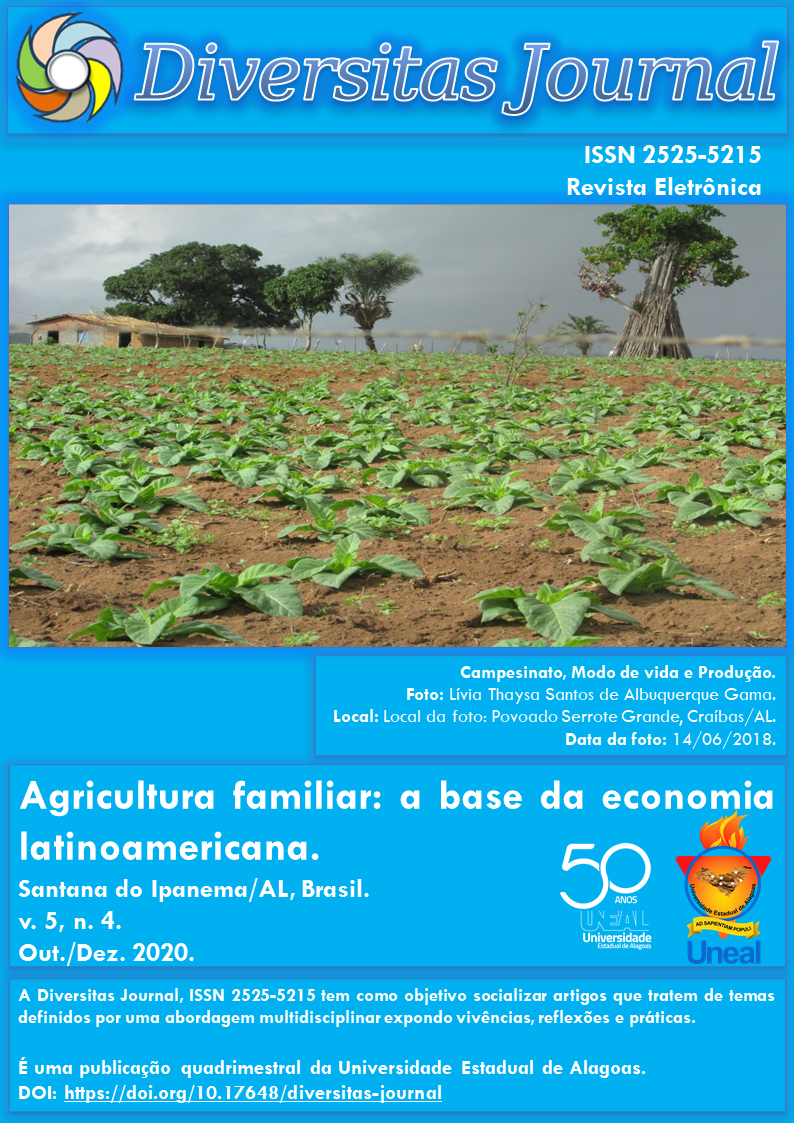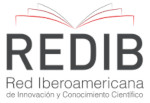Consumo voluntário por caprinos no Bioma Caatinga no Brasil
DOI:
https://doi.org/10.17648/diversitas-journal-v5i4-1375Abstract
ABSTRACT: The objective of this work was to study voluntary consumption by goats in the Caatinga biome, identifying the main species of plants consumed in two research areas and analyzing their bromatology. The consumption observation work was carried out in two different areas of the semi-arid region of Alagoas, municipalities of São José da Tapera and Santana do Ipanema. The plants were identified through visual analysis of the samples. For bromatological analysis, the samples were defoliated, weighed and frozen during the follow-up period. The samples were packed in styrofoam boxes with ice and sent to the Animal Nutrition Laboratory - LANA, CENA / USP. In the area of São José da Tapera, it was seen that the consumption of goats occurred from 7 am to 5 pm, while in the area of Santana do Ipanema the same occurred between 7 am and 4:16 pm. The most consumed plants were: Jurema Preta (Mimosa hostilis Benth), Malva Branca (Malva sylvestris), Catingueira (Caesalpinia pyramidalis Tul.), Juazeiro (Zizyphus joazeiro Mart.), Canopy (Croton heliotropiifolius Kunt.), Capim milishã (Digitaria sanguinalisinal ) and quince (Croton sonderianus Mull. Arg.). For the results of bromatology, the plants that stood out in the production of protein were bush grass, black jurema, angico and canopy. The highest yields of organic matter were obtained from catingueira, jurema-preta, mauve-branco and angico. It was concluded that the method used proved to be efficient in the study of the most consumed forages, the frequent selectivity of the animals and the need for a large quantity of species per area to supply the voluntary selective consumption of goats in native pasture. On the other hand, the method does not change the animals' routine, nor does it harm their health and allows for greater interaction between the researcher and the research environment.
KEYWORDS: Bromatology;Goat breeding;Animal nutrition;Semi-arid.
Metrics
Downloads
Published
How to Cite
Issue
Section
License
Copyright (c) 2020 José Crisólogo de Sales Silva, Adibe Luiz Abdalla, Alex Romualdo Nunes de Oliveira, Neilson Silva Santos, Lívio Kelver Martins da Silva, Edvânia da Conceição Pontes Lima

This work is licensed under a Creative Commons Attribution 4.0 International License.
The Diversitas Journal expresses that the articles are the sole responsibility of the Authors, who are familiar with Brazilian and international legislation.
Articles are peer-reviewed and care should be taken to warn of the possible incidence of plagiarism. However, plagiarism is an indisputable action by the authors.
The violation of copyright is a crime, provided for in article 184 of the Brazilian Penal Code: “Art. 184 Violating copyright and related rights: Penalty - detention, from 3 (three) months to 1 (one) year, or fine. § 1 If the violation consists of total or partial reproduction, for the purpose of direct or indirect profit, by any means or process, of intellectual work, interpretation, performance or phonogram, without the express authorization of the author, the performer, the producer , as the case may be, or whoever represents them: Penalty - imprisonment, from 2 (two) to 4 (four) years, and a fine. ”


















